Macroeconomic Analyses and Forecasts
The research group comprises all macroeconomic analyses, forecasts and policy papers that are carried out on a regular basis at the IWH. These reports contribute significantly to the IWH being one of the leading economic research institutes in Germany. The group focuses on current macroeconomic perspectives in Germany. However, forecasts for an open economy like the German one have to start from thorough and up-to-date analysis of the world economy. Special attention is given to East Germany, Central European countries, and to the European Union as a whole.
Research in this group is linked closely to other projects within the cluster that focus on publishing research papers in refereed journals. In particular, econometric tools developed by Research Group Econometric Tools for Macroeconomic Forecasting and Simulation are applied for the macroeconomic projections, and policy conclusions derived by Research Group Monetary Aggregates, Asset Prices and Real Outcomes are important building blocks for policy recommendations.
IWH Data Project: IWH Macrometer: Macroeconomic Database for the German Länder, East and West Germany
All of the group’s macroeconomic analyses, forecasts and policy papers are available via the Current Forecasting section.
The IWH is member of AIECE (Association d'instituts européens de conjoncture économique).
Research Cluster
Economic Dynamics and StabilityYour contact

Mitglied - Department Macroeconomics
EXTERNAL FUNDING
07.2016 ‐ 06.2022
Joint Economic Forecast
Federal Ministry for Economic Affairs and Energy (BMWI)
The joint economic forecast is an instrument for evaluating the overall economic situation and development in Germany, the euro area and the rest of the world. For this purpose, forecasts of economic activity are generated for the global economy and its major regions. Economic policy recommendations are derived from these forecasts for the euro area and the German economy. The objective of the joint diagnosis, which is commissioned by the Federal Finance Ministry, is to produce a uniform evaluation by all participating institutes. The results are published twice a year as spring and fall forecasts.
01.2013 ‐ 12.2018
Flash Estimate of the Quarterly GDP in Germany
Verlagsgruppe Handelsblatt
01.2018 ‐ 12.2021
Flash Estimate of the Quarterly GDP in Germany
WirtschaftsWoche
12.2015 ‐ 12.2016
Conference “How Can We Boost Competition in the Services Sector?”
European Commission
07.2013 ‐ 06.2016
Joint Economic Forecast
Federal Ministry for Economic Affairs and Energy (BMWI)
The joint economic forecast is an instrument for evaluating the overall economic situation and development in Germany, the euro area and the rest of the world. For this purpose, forecasts of economic activity are generated for the global economy and its major regions. Economic policy recommendations are derived from these forecasts for the euro area and the German economy. The objective of the joint diagnosis, which is commissioned by the Federal Finance Ministry, is to produce a uniform evaluation by all participating institutes. The results are published twice a year as spring and fall forecasts.
09.2015 ‐ 03.2016
Messung der Elastizität der veranlagten Einkommensteuer in Relation zu den Unternehmens- und Vermögenseinkommen
Federal Ministry of Finance (BMF)
01.2013 ‐ 12.2015
Ökonomische Wirksamkeit der Konjunktur stützenden finanzpolitischen Maßnahmen der Jahre 2008 und 2009
Federal Ministry of Finance (BMF)
01.2012 ‐ 12.2015
Quarterly Report on the Economy in Saxony-Anhalt
Ministry of Economy, Science and Digitalisation of the State of Sachsen-Anhalt
‐
Business Cycle Forecasts and Stress Scenarios
Volkswagen Financial Services AG
Refereed Publications
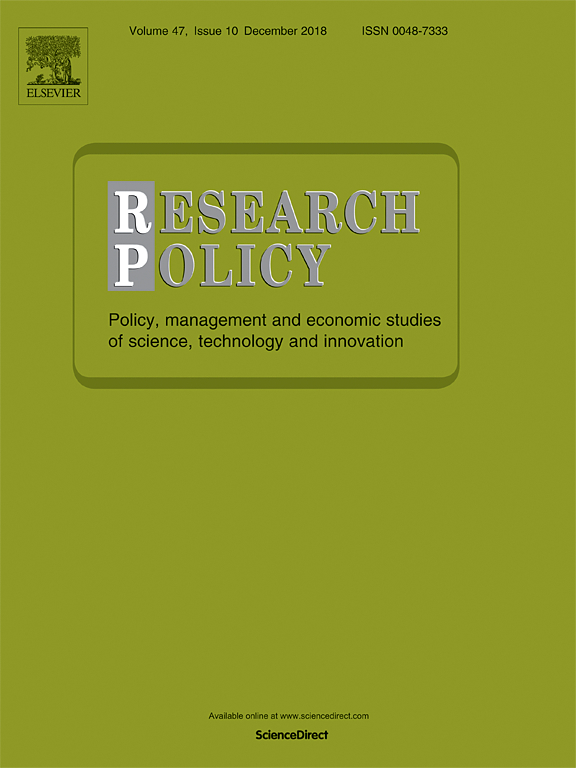
Can R&D Subsidies Counteract the Economic Crisis? – Macroeconomic Effects in Germany
in: Research Policy, No. 3, 2015
Abstract
During the economic crisis of 2008 and 2009, governments in Europe stabilized their economies by means of fiscal policy. After decades of absence, deficit spending was used to counteract the heavy decline in demand. In Germany, public spending went partially into R&D subsidies in favor of small and medium sized enterprises. Applying the standard open input–output model, the paper analyzes the macroeconomic effects of R&D subsidies on employment and production in the business cycle. Findings in the form of backward multipliers suggest that R&D subsidies have stimulated a substantial leverage effect. Almost two thirds of the costs of R&D projects are covered by the enterprises themselves. Overall, a subsidized R&D program results in a production, value added and employment effect that amounts to at least twice the initial financing. Overall, the R&D program counteracts the decline of GDP by 0.5% in the year 2009. In the year 2010 the effects are already procyclical since the German economy recovered quickly. Compared to the strongly discussed alternative uses of subsidies for private consumption, R&D spending is more effective.
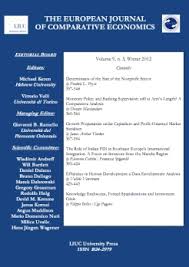
Skill Content of Intra-european Trade Flows
in: European Journal of Comparative Economics, No. 1, 2013
Abstract
In recent decades, the international division of labor has expanded rapidly in the wake of European integration. In this context, especially Western European high-wage countries should have specialized on (human-)capital intensively manufactured goods and should have increasingly sourced labor-intensively manufactured goods, especially parts and components, from Eastern European low wage countries. Since this should be beneficial for the high-skilled and harmful to the lower-qualified workforce in high-wage countries, the opening up of Eastern Europe is often considered as a vital reason for increasing unemployment of the lower-qualified in Western Europe. This paper addresses this issue by analyzing the skill content of Western European countries’ bilateral trade using input-output techniques in order to evaluate possible effects of international trade on labor demand. Thereby, differences in factor inputs and production technologies have been considered, allowing for vertical product differentiation. In this case, skill content of bilateral exports and imports partially differs substantially, especially in bilateral trade between Western and Eastern European countries. According to the results, East-West trade should be harmful particularly to the medium-skilled in Western European countries.
Working Papers
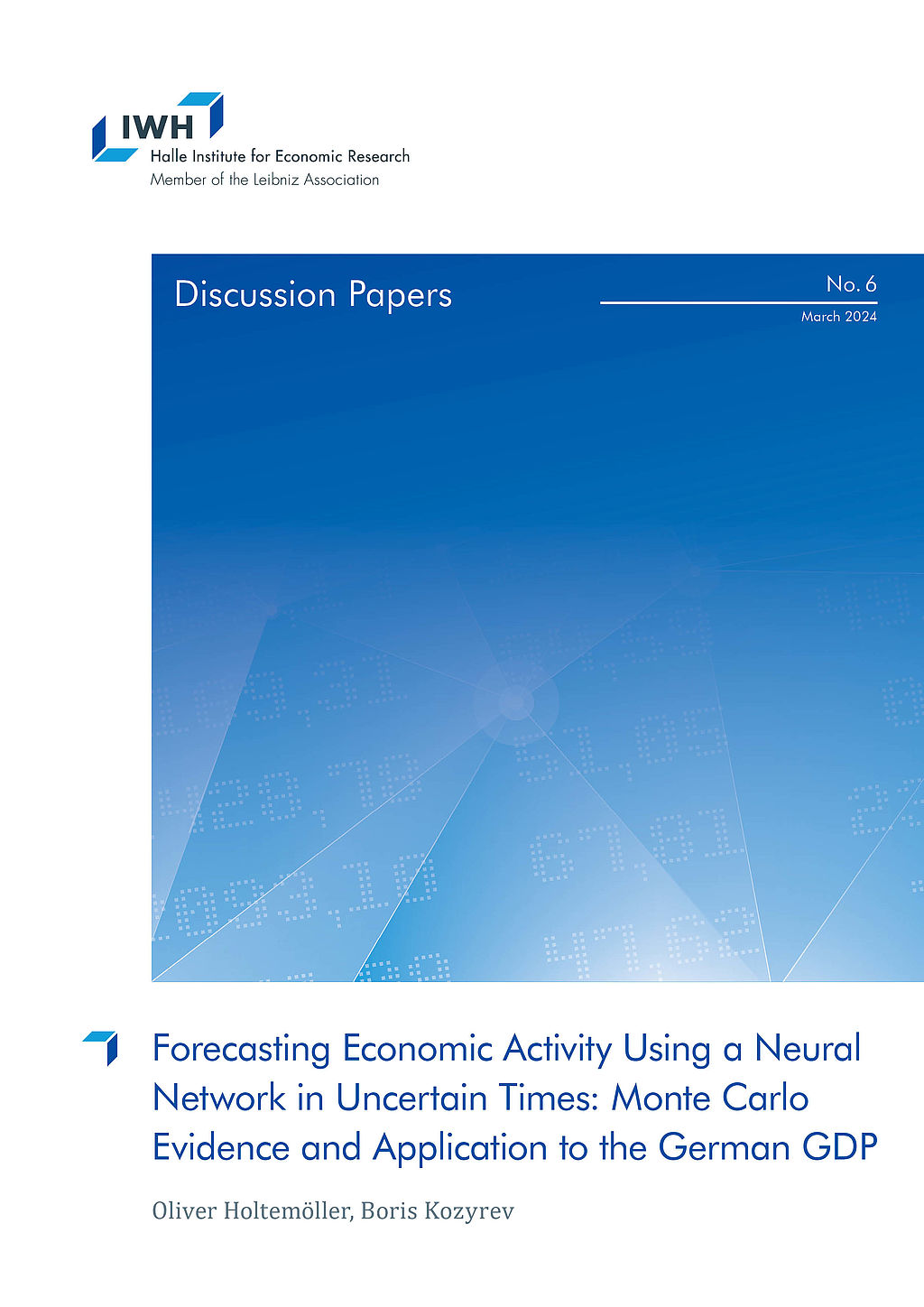
Forecasting Economic Activity Using a Neural Network in Uncertain Times: Monte Carlo Evidence and Application to the German GDP
in: IWH Discussion Papers, No. 6, 2024
Abstract
In this study, we analyzed the forecasting and nowcasting performance of a generalized regression neural network (GRNN). We provide evidence from Monte Carlo simulations for the relative forecast performance of GRNN depending on the data-generating process. We show that GRNN outperforms an autoregressive benchmark model in many practically relevant cases. Then, we applied GRNN to forecast quarterly German GDP growth by extending univariate GRNN to multivariate and mixed-frequency settings. We could distinguish between “normal” times and situations where the time-series behavior is very different from “normal” times such as during the COVID-19 recession and recovery. GRNN was superior in terms of root mean forecast errors compared to an autoregressive model and to more sophisticated approaches such as dynamic factor models if applied appropriately.
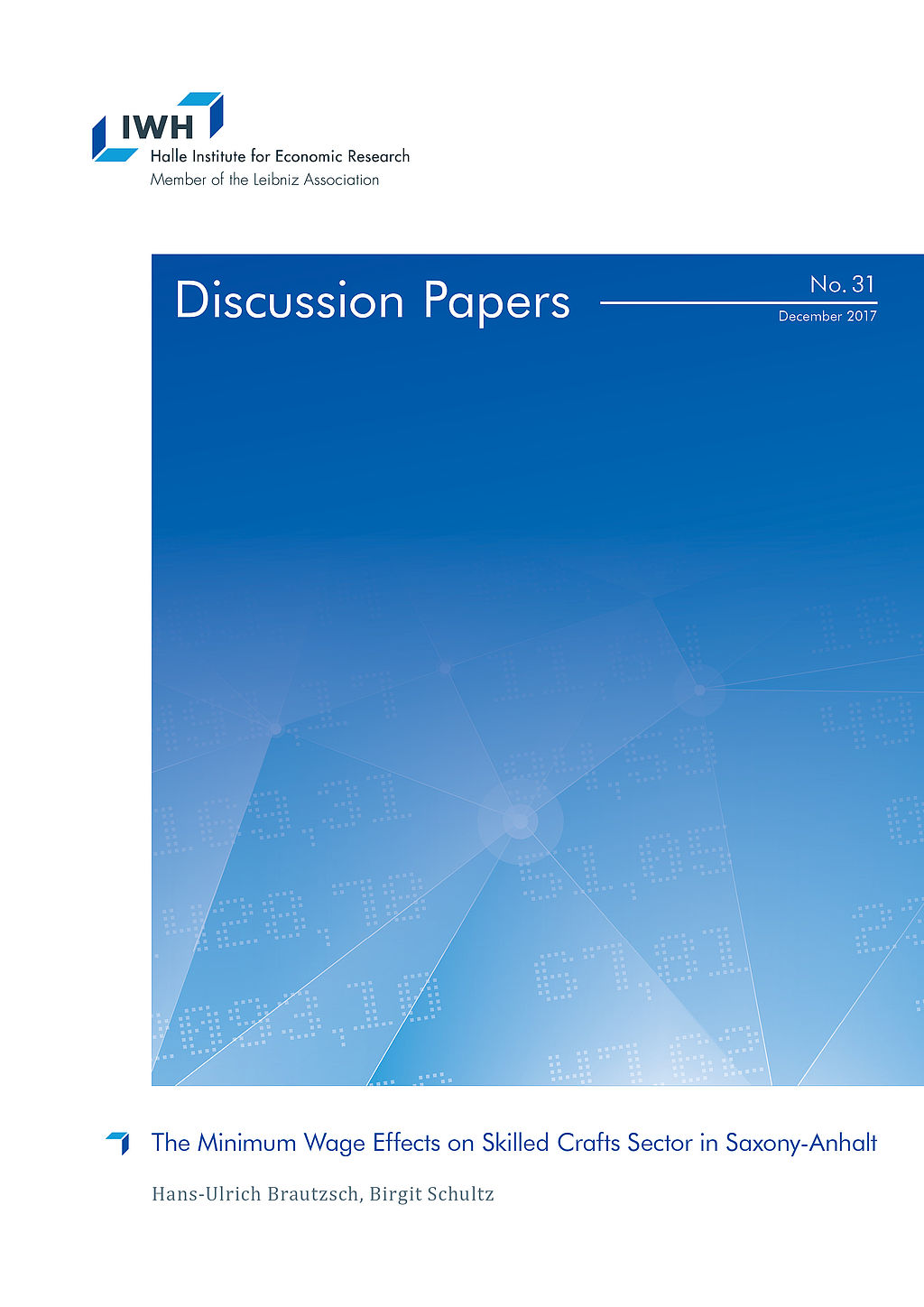
The Minimum Wage Effects on Skilled Crafts Sector in Saxony-Anhalt
in: IWH Discussion Papers, No. 31, 2017
Abstract
This paper examines the effects of the minimum wage introduction in Germany in 2015 on the skilled crafts sector in Saxony-Anhalt. Using novel survey data on the skilled crafts sector in Saxony-Anhalt, we examine three questions: (1) How many employees are affected by the minimum wage introduction in the skilled crafts sector in Saxony- Anhalt? (2) What are the effects of the minimum wage introduction? (3) How have firms reacted to wage increase? We find that about 8% of all employees in the skilled crafts sector in Saxony-Anhalt are directly affected by the minimum wage introduction. A difference-in-difference estimation reveals no significant employment effects of the minimum wage introduction. We test for alternative adjustment strategies and observe a significant increase of output prices.
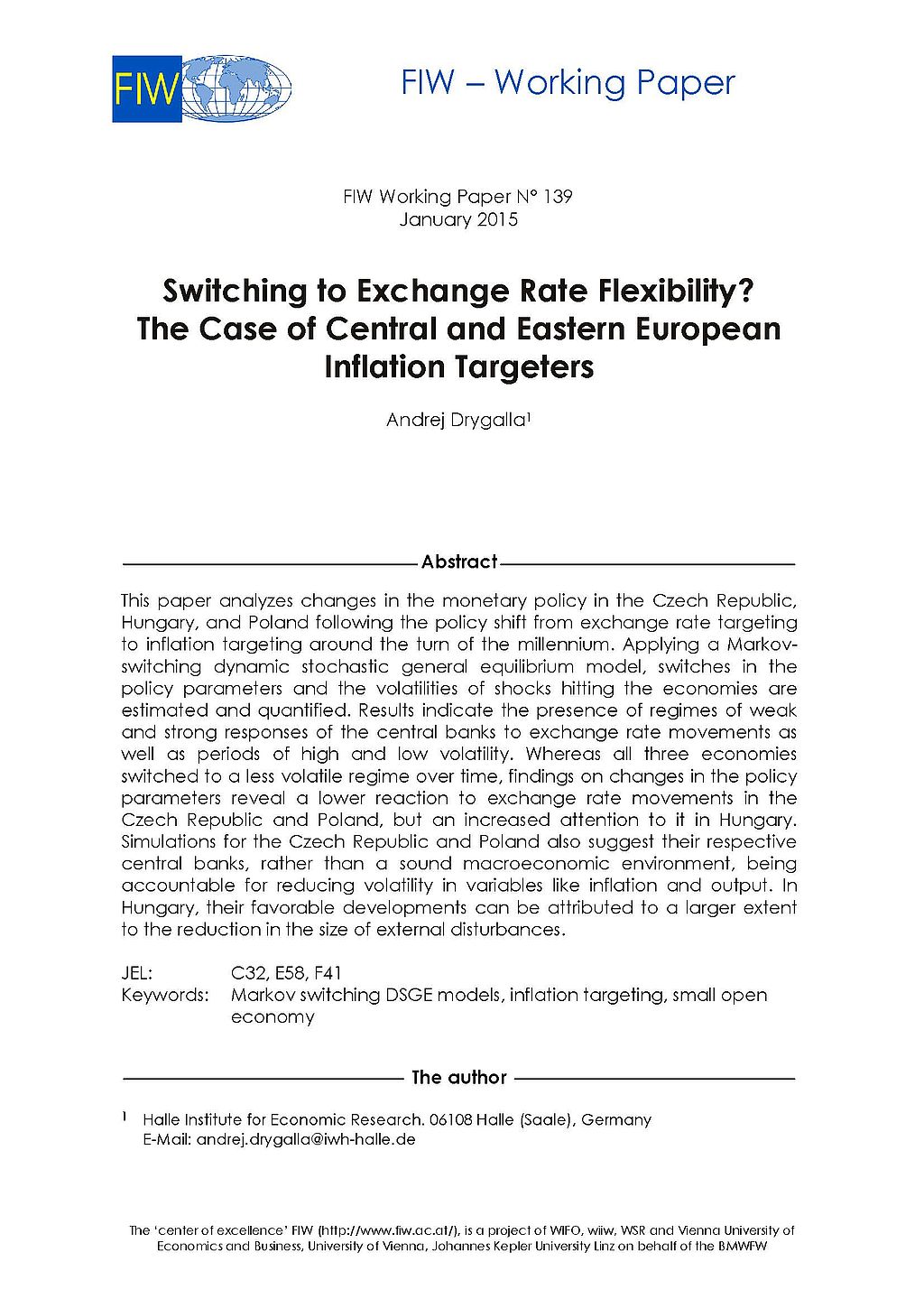
Switching to Exchange Rate Flexibility? The Case of Central and Eastern European Inflation Targeters
in: FIW Working Paper, Nr. 139, No. 139, 2015
Abstract
This paper analyzes changes in the monetary policy in the Czech Republic, Hungary, and Poland following the policy shift from exchange rate targeting to inflation targeting around the turn of the millennium. Applying a Markovswitching dynamic stochastic general equilibrium model, switches in the policy parameters and the volatilities of shocks hitting the economies are estimated and quantified. Results indicate the presence of regimes of weak and strong responses of the central banks to exchange rate movements as well as periods of high and low volatility. Whereas all three economies switched to a less volatile regime over time, findings on changes in the policy parameters reveal a lower reaction to exchange rate movements in the Czech Republic and Poland, but an increased attention to it in Hungary. Simulations for the Czech Republic and Poland also suggest their respective central banks, rather than a sound macroeconomic environment, being accountable for reducing volatility in variables like inflation and output. In Hungary, their favorable developments can be attributed to a larger extent to the reduction in the size of external disturbances.

Die Learning Economy aus Netzwerkperspektive: Mechanismen und Probleme
in: Jenaer Beiträge zur Wirtschaftsforschung, No. 4, 2006
Abstract
Im Mittelpunkt der gegenwärtigen ökonomischen Entwicklung steht verstärkt Wissen als fundamentale Ressource und Triebkraft wirtschaftlichen Wachstums sowie Lernen als der bedeutendste Prozess. Diese Sichtweise wird durch das theoretische Konstrukt der Learning Economy beschrieben. Die Organisationsform des Netzwerkes gilt dabei als geeignetes Arrangement, um die Teilnahme an Lernprozessen sowie den Zugangs zu einer breiten und diversifizierten Wissensbasis zu gewährleisten. In der vorliegenden Arbeit werden im Rahmen der konzeptionellen Charakteristika der Learning Economy die möglichen Ausprägungen einer aktiven Netzwerktätigkeit, die erfolgsdeterminierenden Mechanismen eines Netzwerkes als auch die mit einem Netzwerkarrangement verbundenen Probleme dargelegt. Es zeigt sich einerseits, dass Netzwerke grundsätzlich einen geeigneten Mechanismus darstellen, um den Notwendigkeiten einer Learning Economy zu begegnen. Andererseits wird ersichtlich, dass die Funktionsfähigkeit von Netzwerken und das Ausschöpfen der vorhandenen Möglichkeiten keinesfalls ohne konstante Anstrengungen der Partner und ein detailliertes Verständnis der zentralen Wirkungszusammenhänge erreicht werden kann. Daher ist die zum Teil euphorisch praktizierte Netzwerkdiskussion in mancher Hinsicht differenziert zu betrachten. Besonders der Abfluss ökonomisch sensiblen Wissens, der nicht-wechselseitige Wissensaustausch sowie die Abschottung bestimmter regionaler Netzwerkstrukturen können schwerwiegende Folgen nach sich ziehen.













